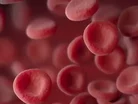How Canada's stem cell research breakthrough will alter medical practices

Canada may have just stumbled upon a medical breakthrough.
Canadian scientists say they have figured out a way to turn regular human blood cells into nerve cells—an achievement that could lead to new advances for those suffering chronic pain or nerve diseases.
According to CTV News, stem cell researchers from McMaster University in Hamilton, Ontario say they have learned how to convert cells from blood into both central nervous neural cells as well cells from the peripheral nervous system, which are the nerves in the rest of the body that are responsible for sensing pain, heat and itches.
RELATED TOPIC: Mad cow disease has resurfaced in Canada. Should we be worried?
Led by Mick Bhatia, director of McMaster’s Stem Cell and Cancer Research Institute, he was initially surprised by the results.
“Neural cells have a very distinct shape, but we thought we had done something wrong to the cells. They were behaving differently to make them elongate, moving from a round shape to a very long stretched-out shape,” he told the news station.
After repeating the procedure over several months, however, they realized that they had achieved something new.
While the idea itself isn’t new, no one has ever been able to actually complete the process of creating central nervous system neural cells and peripheral nervous system cells.
RELATED TOPIC: Are these medical breakthroughs or science fiction?
What this means for the medical community
With this achievement, doctors would ideally be able to take a blood sample from a patient and quickly produce a million sensory and central nervous neural cells, Bhaita said.
Those cells could then be studied to better understand why certain people feel pain or why others experience numbness—such as diabetics.
"Pain is really poorly understood right now, and the drugs available are not well characterized," Bhatia said. "Most are narcotics and opioids that are addictive and they're not very specific to the cells you're trying to target."
RELATED TOPIC: Why is everyone talking about stem cells?
The research will be published as a research paper in Cell Reports.
To keep up with the latest Canadian news, visit our sister brand Business Review Canada.





